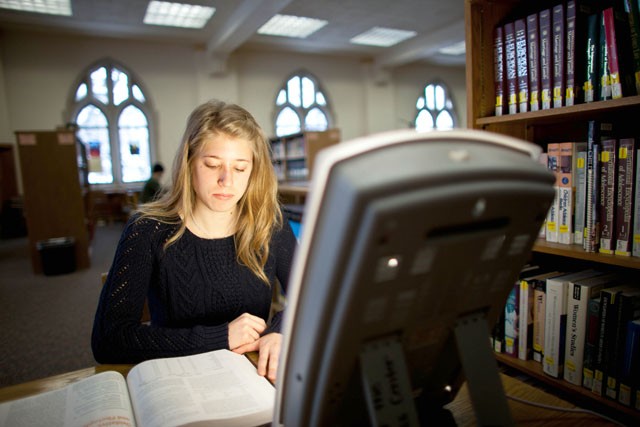Certain students at the University of Minnesota have an extra reason to hope Punxsutawney Phil wonâÄôt see his shadow on Groundhog Day today.
With 46 days of winter still left, those with Seasonal Affective Disorder have a ways to go before their spell is lifted.
First diagnosed in 1984, SAD is a form of depression triggered by the onset of fall and winterâÄôs shortened days. Sufferers develop depressive symptoms, such as oversleeping, overeating, social withdrawal and a decline in cognitive ability.
Today will see almost 10 hours of daylight, but MinnesotaâÄôs quickest winter days can be shorter than nine hours.
Despite the steadily increasing daylight hours, winterâÄôs wrath has settled in among many students around the University campus as well as 50 percent of Minnesotans.
On campus, 3.4 percent of students reported being diagnosed with SAD within their lifetime, and 1.6 percent reported being diagnosed within the past 12 months, according to the 2010 College Student Health Survey Report released through Boynton. Although people may never have been clinically diagnosed with the disorder, they still may experience certain symptoms, like senior Muna Mussa.
Mussa said her internal clock shifts during the dark winter months. SheâÄôs not as alert and is more apt to sleep in longer. She even scheduled her classes this semester later in the day because she said she does not feel awake until after 1 or 2 p.m.
“IâÄôve been trying to exercise and wake up earlier,” Mussa said. “I dread winter.”
Typically, a person experiencing SAD feels lethargic, “as if theyâÄôre in hibernation,” said Dr. Charles Schulz, head of the UniversityâÄôs Department of Psychiatry. “People donâÄôt enjoy things they usually enjoy, and they donâÄôt feel hopeful or happy about how their day is going.”
Those at greatest risk for SAD have had major depression episodes and/or have been diagnosed with bipolar disorder, Schulz said.
About 1.5 percent of people in Florida experience SAD, compared with about 10 percent in New England, Schulz said. “We think that illustrates how the shortened days can make a big difference,” he said.
Gary Christenson, director of the Mental Health Clinic at Boynton Health Service, said that Boynton sees an increase in the demand of services as the fall semester progresses and turns into the spring semester.
“We donâÄôt see that many people who have a clear-cut pattern [of SAD],” Christenson said. “People have a start of depression at one point in the fall and then they release in the spring. ItâÄôs usually a fairly regular pattern.”
He said diagnosing the disorder is difficult given the considerable amount of variables, such as stress from school, to take into account. However, “if you have a pretty clear pattern for a couple years in a row with a specific onset, itâÄôs SAD.”
A common diagnosis to beat the winter blues is to use light therapy, psychiatry professor Barry Rittberg said. Light therapy boxes come in various sizes and are sold over the counter for around $100 and up.
“For students, itâÄôs a big upfront cost, but it does pay off over the course of five years,” Christenson said. “The investment is pretty long lasting.”
Rittberg said the box works by tricking the brain, which has an internal clock that is reset during daylight hours.
“By artificially extending [daylight], your body thinks itâÄôs more in springtime,” Rittberg said. He recommends sitting in front of a light therapy box for 20 to 30 minutes, usually in the morning before the sun rises.
Christenson said Boynton Pharmacy used to sell light boxes but stopped seven years ago because not enough students bought them.
Libraries at some universities in the area, such as the University of St. Thomas and Augsburg College, provide light boxes to enable students to lift their moods while studying.
Birdie Cunningham, wellness center health educator at the University of St. Thomas, said counselors and health services will make referrals to use the light boxes, which she said are roughly the size of a computer screen, in two of their libraries.
“Because the cost is so low and thereâÄôs tons of benefits from it, it just made sense to do it,” Cunningham said of installing them.
Aside from light therapy, the most prominent SAD treatment Schulz stressed was to get on a schedule and to get outdoors.
“You can make a big impact on SAD symptoms by getting outside in natural sunlight and working on your schedule to not stay in bed later and later,” he said. “Exercise is a major help. If you do things, you have a major chance of feeling better.”








